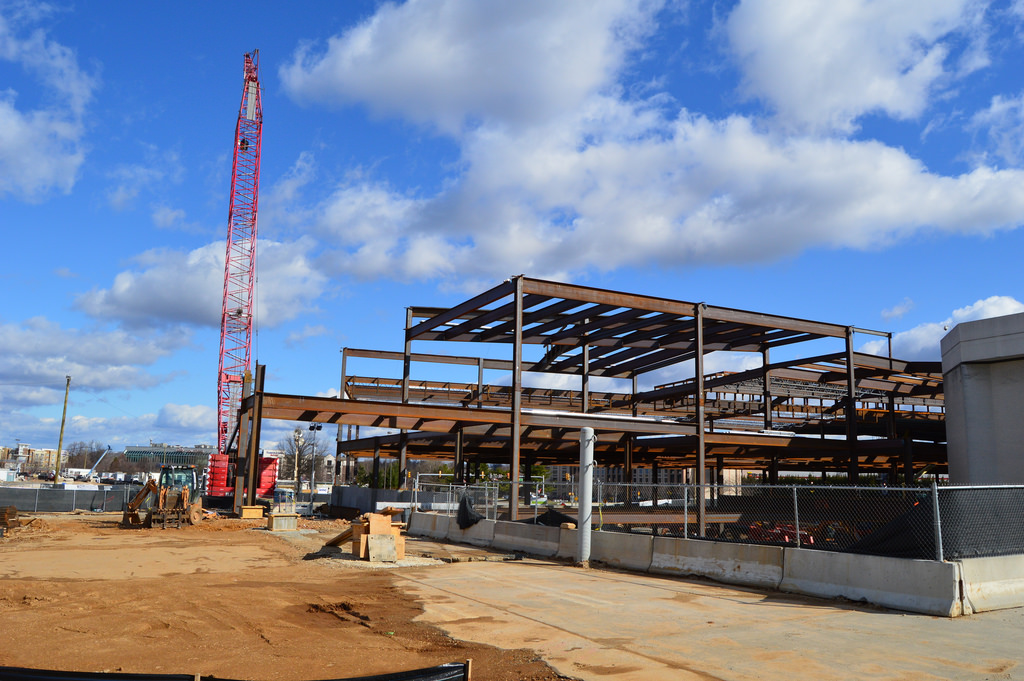The Architecture Billings Index (ABI) reflects sustained demand for design services in nearly all nonresidential project types over the nine to twelve month lead time between architecture billings and construction spending.
The American Institute of Architects (AIA) reported the July ABI score was 54.7, down a point from a mark of 55.7 in June. This score still reflects an increase in design services (any score above 50 indicates an increase in billings).
The new projects inquiry index was 63.7, up slightly from a reading of 63.4 the previous month.
“On top of what has been a flurry of design activity in recent months, some architects are reporting a break in the logjam created by clients placing projects on hold for indefinite periods, which bodes well for business conditions in the months ahead,” said AIA Chief Economist Kermit Baker, Hon. AIA, PhD. “There is some uneasiness in the design community that rapid growth in construction costs could escalate beyond development capital and municipal budgets, which could trigger some contraction in the marketplace down the road.”
July ABI highlights:
- Regional averages: Midwest (58.2), South (55.7), West (53.8) Northeast (53.5)
- Sector index breakdown: institutional (57.3), mixed practice (56.8), commercial/industrial (53.4) multi-family residential (49.8)
- Project inquiries index: 63.7
- Design contracts index: 54.5
The regional and sector categories are calculated as a three-month moving average, whereas the national index, design contracts and inquiries are monthly numbers.
Related Stories
| Feb 22, 2011
LEED Volume Program celebrates its 500th certified Pilot Project
More than 500 building projects have certified through the LEED Volume Program since the pilot launched in 2006, according to the U.S. Green Building Council. The LEED Volume Program streamlines the certification process for high-volume property owners and managers, from commercial real estate firms, national retailers and hospitality providers, to local, state and federal governments.
| Feb 22, 2011
HDR Architecture names four healthcare directors
Four senior professionals in HDR Architecture’s healthcare program have been named Healthcare directors.
| Feb 15, 2011
Iconic TWA terminal may reopen as a boutique hotel
The Port Authority of New York and New Jersey hopes to squeeze a hotel with about 150 rooms in the space between the old TWA terminal and the new JetBlue building. The old TWA terminal would serve as an entry to the hotel and hotel lobby, which would also contain restaurants and shops.
| Feb 15, 2011
New Orleans' rebuilt public housing architecture gets mixed reviews
The architecture of New Orleans’ new public housing is awash with optimism about how urban-design will improve residents' lives—but the changes are based on the idealism of an earlier era that’s being erased and revised.
| Feb 15, 2011
LAUSD commissions innovative prefab prototypes for future building
The LA Unified School District, under the leadership of a new facilities director, reversed course regarding prototypes for its new schools and engaged architects to create compelling kit-of-parts schemes that are largely prefabricated.
| Feb 15, 2011
New 2030 Challenge to include carbon footprint of building materials and products
Architecture 2030 has just broadened the scope of its 2030 Challenge, issuing an additional challenge regarding the climate impact of building products. The 2030 Challenge for Products aims to reduce the embodied carbon (meaning the carbon emissions equivalent) of building products 50% by 2030.
| Feb 15, 2011
New Urbanist Andrés Duany: We need a LEED Brown rating
Andrés Duany advocates a "LEED Brown" rating that would give contractors credit for using traditional but low cost measures that are not easy to quantify or certify. He described these steps as "the original green," and "what we did when we didn't have money." Ostensibly, LEED Brown would be in addition to the current Silver, Gold and Platinum ratings.
| Feb 15, 2011
AIA on President Obama's proposed $1 billion investment in energy conservation
The President’s budget increases the value of investment in energy conservation in commercial buildings by roughly $1 billion, reports AIA 2011 President Clark Manus, FAIA. The significant increase from the current tax deduction of $1.80 per sq. ft. now on the books is an increase for which the AIA has been advocating in order to encourage energy conservation.









